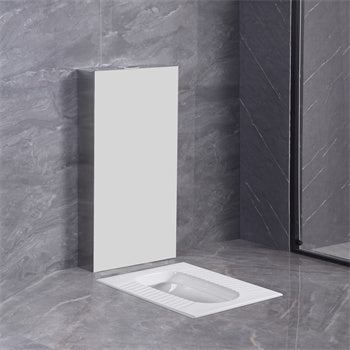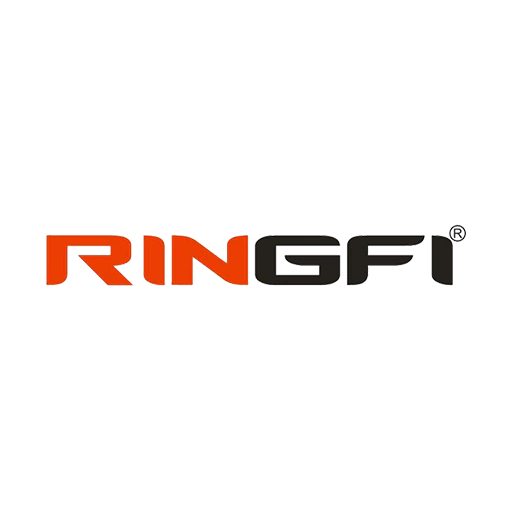Designing a commercial bathroom requires careful planning and attention to detail to ensure it meets both practical needs and aesthetic standards. Whether you’re designing a restroom for an office building, a shopping mall, or a restaurant, understanding the essential elements of bathroom layout, hygiene requirements, and design features that enhance brand image is crucial. This article explores these key considerations, focusing on layout optimization, hygiene solutions, and brand-enhancing design elements, while naturally integrating essential keywords such as toilet, intelligent toilet, smart toilet, basin, wash basin, cabinet basin, and toilet sink.
Bathroom Layout Planning and Optimization
Efficient layout planning is fundamental to any successful commercial bathroom design. The placement of the toilet, intelligent toilet, smart toilet, basin, wash basin, cabinet basin, and toilet sink must be carefully considered to maximize space and functionality.
Optimizing Space with Intelligent Design
The arrangement of fixtures like the toilet, intelligent toilet, and smart toilet should be strategic to ensure ease of access and flow. Placing a toilet or smart toilet in a way that allows for privacy without compromising space is critical. Similarly, the positioning of basins, whether they are wash basins or cabinet basins, should facilitate smooth traffic flow, allowing multiple users to utilize the space simultaneously without congestion.
Incorporating Advanced Technologies
Modern commercial bathrooms often feature intelligent toilets and smart toilets that offer advanced functionalities such as automated flushing, seat warming, and bidet features. These toilets not only enhance user experience but also contribute to hygiene and water conservation. Integrating these smart solutions requires careful planning to ensure appropriate plumbing and electrical systems are in place.
Balancing Aesthetics and Functionality
A well-designed bathroom layout balances aesthetics with functionality. Choosing sleek, modern basins, such as wash basins and cabinet basins, can elevate the overall look of the bathroom while ensuring durability and ease of maintenance. The selection and placement of these fixtures should reflect the brand’s image and the type of clientele the commercial space serves.
Hygiene Requirements and Solutions for Commercial Spaces
Maintaining high hygiene standards in commercial bathrooms is paramount. The choice of fixtures and materials plays a significant role in meeting these requirements.
High-Quality Materials and Finishes
Using high-quality materials for the toilet, intelligent toilet, smart toilet, basin, wash basin, cabinet basin, and toilet sink is essential for hygiene and durability. Non-porous surfaces and finishes are easier to clean and less likely to harbor bacteria and viruses. Materials such as stainless steel, vitreous china, and anti-microbial coatings can significantly enhance hygiene standards.
Automated and Touchless Solutions
Automated and touchless technologies are increasingly popular in commercial bathrooms due to their ability to reduce the spread of germs. Intelligent toilets and smart toilets often come with touchless flushing mechanisms. Similarly, touchless faucets and soap dispensers for wash basins and cabinet basins minimize contact points, further enhancing hygiene.
Effective Cleaning and Maintenance Strategies
Regular cleaning and maintenance are crucial for maintaining hygiene in commercial bathrooms. The design should facilitate easy access to all areas for cleaning staff. Fixtures like the toilet, intelligent toilet, smart toilet, and various types of basins should be easy to clean and maintain. Providing clear maintenance guidelines and schedules can help ensure that hygiene standards are consistently met.
Design Elements that Enhance Brand Image
The design of a commercial bathroom can significantly impact a brand’s image. Thoughtful design elements that reflect the brand’s values and aesthetic can create a lasting impression on users.
Coherent Brand Aesthetic
The choice of fixtures and finishes should align with the overall brand aesthetic. For instance, high-end brands might opt for luxurious intelligent toilets and smart toilets with advanced features, while eco-friendly brands might emphasize sustainable materials and water-saving fixtures like efficient basins and toilets. Consistency in design elements such as color schemes, materials, and fixture styles helps reinforce the brand’s identity.
User Comfort and Accessibility
Ensuring user comfort and accessibility is essential in commercial bathroom design. Features such as ergonomic toilet seats, user-friendly intelligent toilets, and smart toilets with customizable settings can enhance comfort. Providing accessible wash basins and cabinet basins that accommodate all users, including those with disabilities, reflects a commitment to inclusivity and care.
Innovative and Unique Features
Incorporating unique and innovative features can set a commercial bathroom apart and enhance the brand image. Smart toilets with built-in bidet functions, motion-activated lighting, and ambient music can create a memorable user experience. Similarly, stylish basins and cabinets can serve as focal points, adding to the bathroom’s overall appeal.
Conclusion
Designing a commercial bathroom involves a delicate balance of functionality, hygiene, and aesthetic appeal. By carefully planning the layout, selecting high-quality and hygienic materials, and incorporating design elements that reflect the brand’s image, a commercial bathroom can significantly enhance user experience and reinforce the brand’s identity. Key fixtures like the toilet, intelligent toilet, smart toilet, basin, wash basin, cabinet basin, and toilet sink play crucial roles in achieving these goals. As a bathroom product manufacturer, staying attuned to these considerations and offering solutions that meet these needs can position your products as the top choice for commercial bathroom projects.

